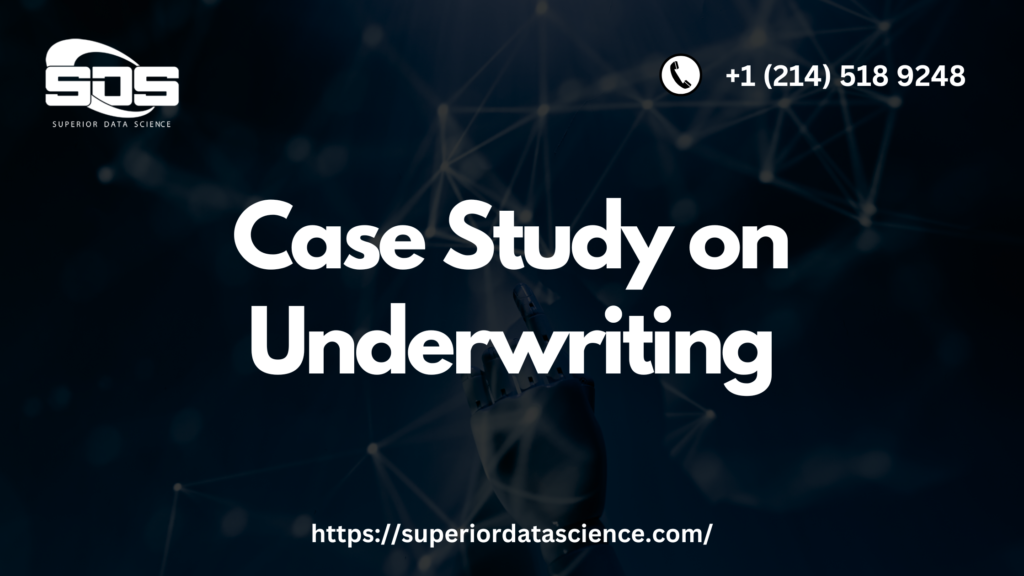Case Study on Underwriting: How Underwriters’ Evaluation and Research Drive Profitability for Financial Companies
Underwriting, the process through which an individual or institution assumes financial risks in exchange for a fee, is a vital function within the financial industry. Banks, insurance companies, and investment houses are among the institutions that offer underwriting services to customers. These entities provide guarantees of payment in the event of risk-related issues or financial losses, enabling individuals to take on liabilities. Underwriters, who are skilled professionals in risk assessment, play a crucial role in establishing a fair and stable market for financial transactions. Conducting a case study on underwriting can offer valuable insights into the practices and decision-making processes employed by underwriters in real-world scenarios.
Earnings of companies based on better underwriting:
- ABC Insurance Corporation earns $1 million on each customer based on underwriting among $4 million of premium paid out by customers.
- Berkshire Hathway counts a total income of $35.8 billion in which 3.3% of total return is on good underwriting service.
- Assicurazioni Generali (ARZGY) total net income of $1.8 billion in which 3.9% is for good underwriting service.
- The People’s Insurance Co. (Group) of China profited $14.6 billion in which 7.0% is for good underwriting.
- There are many sorts of underwritings. Those are –
- Securities underwritings
- Risk
- Exclusivity
- Reward
- Bank underwriting (Loan)
- Insurance underwriting
Underwriting is a fundamental process in various industries, serving different purposes and facilitating financial transactions. This article provides a comprehensive overview of different types of underwriting and their applications. From continuous underwriting to real estate underwriting, forensic underwriting, and sponsorship underwriting, each form plays a unique role in assessing risks and supporting financial endeavors.
Securities Underwriting: Raising Capital and Managing Risk
One prominent form of underwriting is securities underwriting, wherein banks raise investment capital for corporations, governments, and municipalities. Banks form syndicates to underwrite transactions, taking on the responsibility of distributing securities and managing associated risks.
Banking Underwriting: Evaluating Creditworthiness for Loans
Underwriting in the banking sector involves detailed credit analysis prior to loan approval. Consumer underwriting, commercial underwriting, and mortgage underwriting are branches of banking underwriting that rely on factors such as income, credit score, assets, and appraisals to assess creditworthiness.
Insurance Underwriting: Evaluating Risk for Coverage
Insurance underwriting focuses on evaluating prospective insurance candidates for life insurance, health and wealth insurance, as well as property and rental insurance. Insurers analyze clients’ repayment capabilities and their likelihood of incurring expenses to determine suitable coverage.
Real Estate Underwriting: Assessing Borrower and Property
Real estate underwriting entails assessing both the borrower’s background and the property they intend to purchase. This process determines the actual value of the property and assesses its worth against the loan amount, considering potential repayment challenges.
Forensic Underwriting: Evaluating Post-loan Repayment Options
Forensic underwriting comes into play when borrowers are unable to repay the loan. This “after-the-fact” process involves researching whether borrowers can secure additional loans or refinancing before addressing their existing debt obligations.
Sponsorship Underwriting: Financial Support and Broadcasting
Sponsorship underwriting encompasses financial sponsorship for various ventures and is commonly associated with funding in broadcasting, including television and radio. It refers to financial support provided by organizations or companies to sustain operational services.
The following are the top responsibilities of an underwriter:
- Applications for insurance, loans, mortgage or IPOs examination.
- Finding potential borrowers based on their assets, background, income, and other factors for further paperwork.
- Evaluation of market risks and financial investments.
- Conduct research and evaluate applicants documents.
- Approving applications based on previous research and evaluation.
In summary, an underwriter decides the worthiness of taking risk for investment or giving loans to the borrower based on knowledge they gathered in their field. Specially, an underwriter who works with health insurance companies does the hard thing by evaluating the health condition of the borrower and also evaluating the future health risks. Assessing every possible thing that can help to evaluate or do research on the specific person is the main job of an underwriter.
Earning based on underwriting is named adjusted underwriting profit. Adjusted Underwriting Profit is the profit that an insurance company earns after paying all the expenses and insurance claims that damaged customers’ assets.
In conclusion, an underwriting process helps insurance companies, banks, and many investment companies by researching and evaluating borrowers data and assets and their capability for pay back or taking risks.
We are the company providing a great Underwriting System Using AI & Machine Learning for you.
Still, Have any Questions or Doubts or Queries?? Why don’t you message us for more clearance?,
Click to check out our LinkedIn page: Superior Data Science
Advantages of Machine Learning in Financial Forecasting
Using AI to robotize the monetary estimating measure presents a few remarkable advantages for senior money heads and their groups. The key advantages are summed up below.
1. Capacity to Produce More Accurate Forecasts, Faster
As referenced before, AI empowered estimating can free monetary gauging of the concentrated work of gathering and accommodating information. The apparatuses can be designed to gather and accommodate extremely enormous informational indexes in a mechanized style. In addition, AI apparatuses can assist with deciding business drivers and enormously diminish estimate blunder. AI calculations are intended to gain from the information after some time and foresee which drivers have the best effect on monetary execution. After some time, the model turns out to be more precise and produces figures all the more rapidly.
2. Hedge between best and worst case scenario
Accounting page driven gauging measures impose limits on the number of information sources and the amount of information that anticipating models can process and consume. Since AI devices can store more information and process it faster than humans, they have the capability to significantly enhance the volume and types of data that can be utilized. This enables us to have a better opportunity to hedge between the best and worst-case scenarios.
3. Empowering Value-Adding Activities
Customary estimating measures ordinarily expect examiners to invest the vast majority of their energy accommodating and gathering information as opposed to chipping away at esteem added investigation and collaborating with the business. Utilizing an AI answer for production at any rate a standard estimate can help investigators move away from these commonplace assignments and spotlight on understanding operational drivers, key business occasions, and microeconomic and macroeconomic elements that may affect the business, carrying those experiences into the determining cycle. Utilizing AI can eventually help monetary investigators accomplice all the more intimately with the business and backing dynamic.
The Emergence of AI in Accounting and Finance
There are sure businesses that are generally helpless to the effects of AI. The most referred to report from NPR predicts that:
- Bookkeepers have a 97.6 percent possibility of seeing their positions computerized.
- Accountants and examiners have a 93.5 percent possibility of seeing their positions mechanized.
- Financial examiners have a 23.3 percent possibility of seeing their positions mechanized.
To summarize, occupations that involve repeatable, precise tasks are at a higher risk of automation compared to those that require judgment, analysis, and relationship-building skills. Thus, in the event that your present place of employment regularly expects you to show those attributes, at that point you need not concern. For Finance and Accounting, AI and robotization are viewed as suitable answers for successfully managing consistency and danger challenges across different areas. To stay serious, organizations are moving from work exchange and seaward unrest to mechanization insurgency. Man-made intelligence speaks to an occasion to decrease the weight on money experts, especially around conventional monetary exercises, for example, exchange handling, review and consistency. These exercises in their present structure keep money from being more essential colleagues.
In What Way Might We Help You Improve Your Customer Service with an Advanced Platform?
- Build ai platform for your team
- Quick financial projections according to your double entries
- Analysis Charts and plots
- Resources to carry on this project
- Superior Data Science builds reinforcement learning agent
Through our platform you will be able to get the forecasted financial statements including income statement, balance sheet, cash flow statement. On these forecasts you can have the opportunity to decide and take actions on. Best and worst case scenario. Through the forecasted data organization can take actions to create value for their investors.






